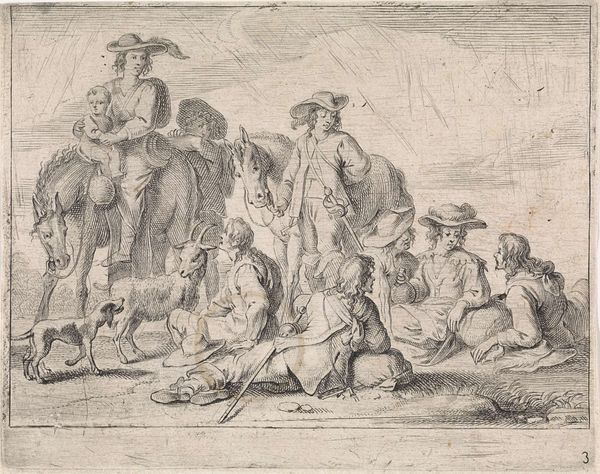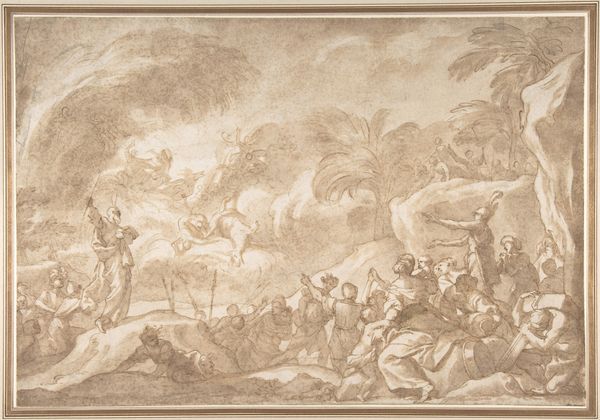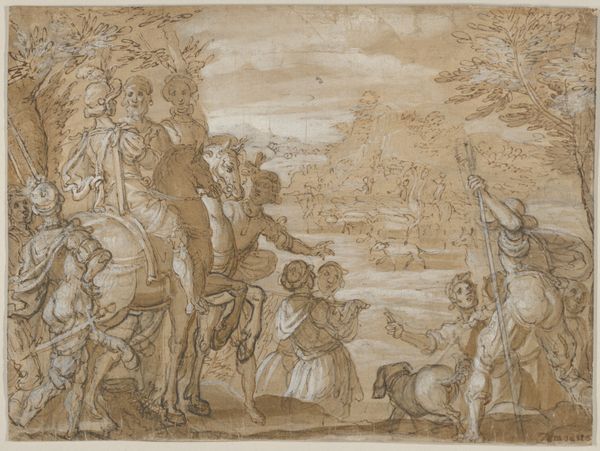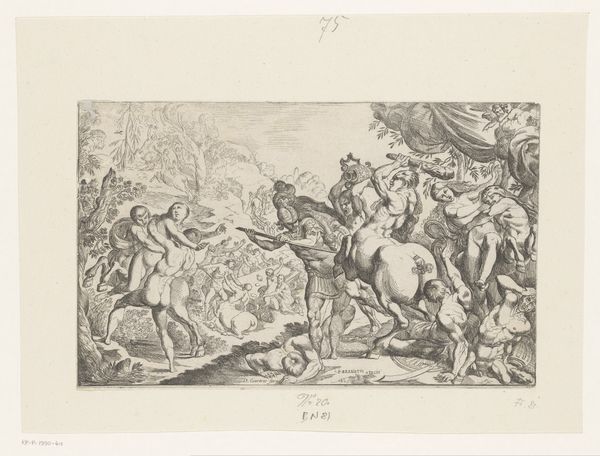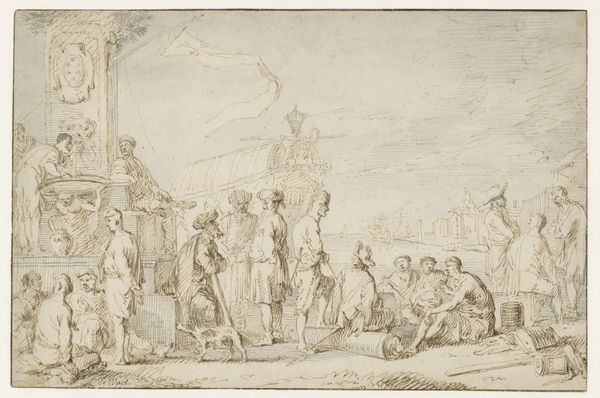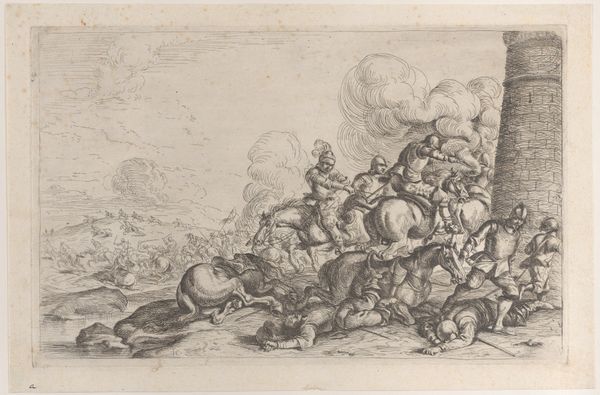
Dimensions: 12 5/8 x 18 3/8 in. (32.1 x 46.7 cm)
Copyright: Public Domain
Curator: Look at this compelling work titled "Cavalry Battle," attributed to Jacques Courtois. Though the date range is broad, 1635 to 1900, its style strongly suggests a mid-17th century origin. Editor: It’s quite visceral. My immediate impression is of chaos and violent movement, despite the muted palette and the rather loose handling of the medium. I wonder, what exactly am I looking at, material-wise? Is this pen and ink, a wash...? Curator: It appears to be executed with pen and ink, heightened with wash on laid paper. Courtois was well-known for his battle scenes, finding considerable success in depicting the drama of military encounters for noble patrons, imbuing this work with socio-historical importance as military spectacle. Editor: So, not just a drawing, but something potentially made for reproduction? How does that affect our reading of its intended audience and, crucially, the skill invested in it? The material speaks of a more transactional creative enterprise. I also sense how labor conditions have allowed production of multiples affordable. Curator: That's a great point. This drawing offers us insight into the culture of warfare at the time, shaped as much by artists, the patronage, as it was by the battlefield itself. The composition suggests a staged presentation of power. Editor: Absolutely. You know, I’m struck by the paper itself. What condition is it in? Considering its age and the fact it may have functioned as something of a ‘template’ for prints, I’d expect to see far more damage. That would certainly colour my thinking about production quality, materiality and even economics behind the piece. Curator: Preservation is excellent, indicating perhaps this remained more of a preparatory sketch. What this reveals to me is not simply violence but that in its making, and the networks surrounding this creation, war became entertainment. It served a propagandistic and normalizing purpose within aristocratic circles. Editor: Agreed, but let’s also consider the economics and conditions shaping material culture, not just artistic license, no? Perhaps a less romantic reading of art that includes accounting material and labor is relevant today to re-imagine this era? Curator: An excellent point that bridges history and making, making the past very palpable today. Editor: Indeed. A fresh materialist perspective that is about a lot more than "materials," which speaks to social conditions that gave the world this cavalry!
Comments
No comments
Be the first to comment and join the conversation on the ultimate creative platform.

